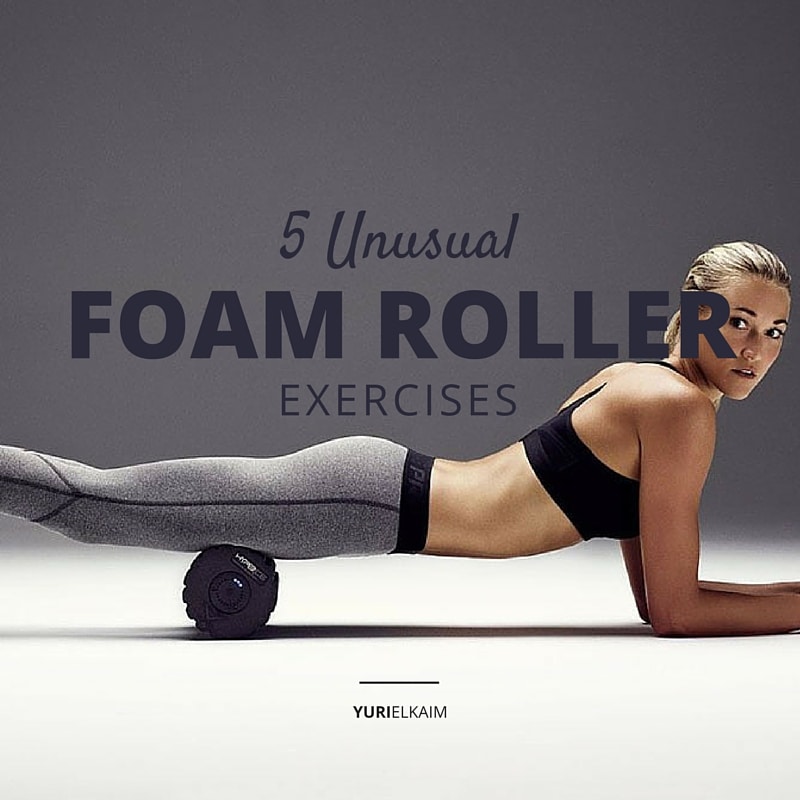In this article
Tight and achy but don’t feel like relying on a full-body massage all the time?
In addition to a massage ball—another one of my favorite workout recovery tools, you can also take care of yourself at home with these relieving foam roller exercises.
Using a foam roller benefits you in so many ways. It’s not that expensive, it’s easy to use, and most importantly, it can help you get some relief to those tricky spots on your body that have been nagging you so much.
Let’s look at a few body parts and how foam roller exercises can help you. If you need any further clarity on how to do these foam roller exercises, simply watch the video below.
1. Upper Hamstrings
That area right beneath your butt and behind your thighs can get really tense, and foam rollers can really help you work out those kinks.
Place your foam roller on a surface about waist height. This could be a small table, a firm bed, or even the edge of your couch.
Straddle it with your right leg and rest your right upper hamstring on the foam roller, rolling back and forth while working it into the muscle. Repeat with your left leg after a few minutes.
You’ll look kind of funny doing it, but I promise it will feel amazing, especially if you apply more body weight to work deeper into the muscle.
[Related: 3 Great Stretches for Tight Hamstrings]
2. Groin
If you thought that looked funny, you’ll really get a kick out of this move.
Stick with me… it’s worth it.
Lie face down on the floor with your foam roller between your legs. Extend your right leg out to the side and bend your knee at a 90 degree angle.
Gently roll from side to side, working the foam roller into your inner thigh and groin. Once again, modulate your body weight for a deeper massage. Repeat with your left leg when you’re ready.
Here, you’re massaging the vastus medialis oblique muscle, which gets pretty tight and sore for a lot of people. It might be a bit painful at first; that’s because you’re working different muscle fibers and fascia that need to be opened up a bit.
Don’t worry; it gets easier with time, and you’ll feel great for having done it.
3. Upper Back
Kneel as if in child’s pose. If you’re not familiar with this yoga position, it’s essentially kneeling forward with your torso extended and your forehead to the floor with your arms outstretched and palms facing up.
Place the foam roller underneath your forearms and slowly roll it back and forth so you’re bending and stretching your upper back repeatedly.
This will really help you get those deep back extensions in. They will bring you so much relief.
4. Spine
This is one of the foam roller exercises I really enjoy. It’s simple but so powerful.
Lie on your back down on the floor and put the foam roller underneath your shoulder blades. Put your hands behind your head.
Roll back a few centimeters and gently wriggle from side to side, working out the muscles along the breadth of your back. Roll back a few centimeters more, and do the same thing again, repeating this move until you’ve massaged the length of your spine.
This is an excellent foam roller exercise for people who spend a lot of time sitting.
Please note: you should only go as far down your back as you feel comfortable. If you feel some discomfort, stop the exercise.
5. Calves/Lower Hamstrings
Sit on the floor with your legs extended. Place the foam roller under your right leg.
Cross your left leg over your right to apply more bodyweight down on the foam roller and begin rolling it gradually up and down the length of your lower hamstrings and calf.
Once you’ve gotten a good massage in, switch it over to your left leg and repeat.
When to Do Foam Roller Exercises
Feel free to do these foam roller on evenings after you’ve had a long day, or even before your workouts. You can also use them as workout recovery.
The truth is, you can do them whenever you feel like. These exercises really help break up the adhesions in your muscles, so they’re tremendously beneficial to your body.
Do them for five to ten minutes every day and I bet you’re going to feel like a million bucks!
Rock Your Recovery
If you’re feeling stiff, sore, or generally creaky you’ll want to check out my 11 little-known workout recovery strategies, which can help you feel limber and supple any time of the day. Download them now for FREE by clicking the banner below.

